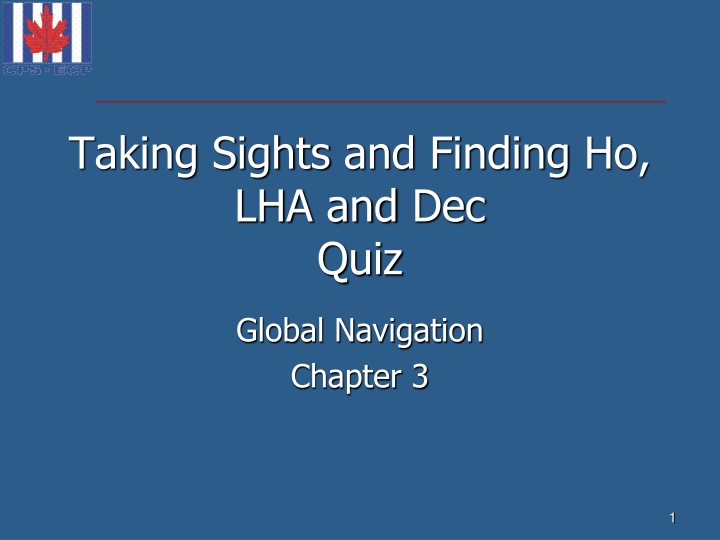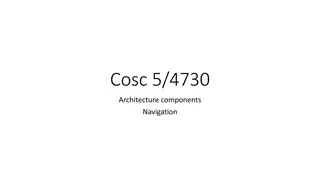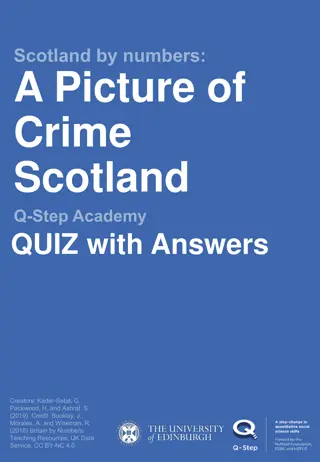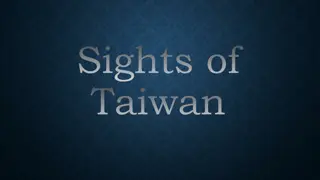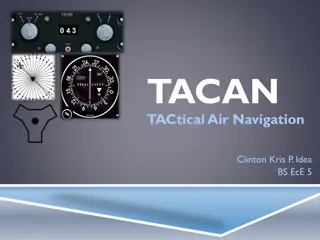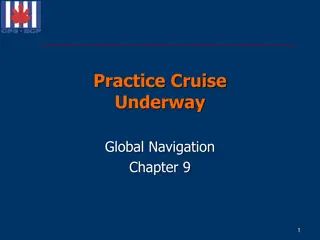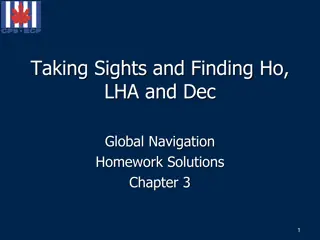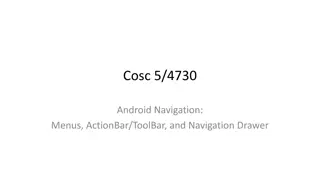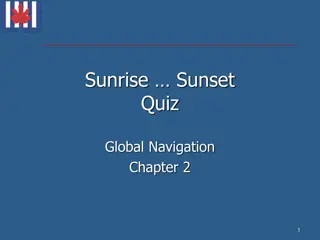Global Navigation Quiz on Sights and Ho Corrections
Test your knowledge with this global navigation quiz focusing on parallax corrections for celestial bodies, GHA calculations, magnitude comparison, and more. Explore questions on lunar altitude corrections, sunrise sighting tips, and atmospheric corrections. Sharpen your celestial navigation skills with this engaging quiz.
Uploaded on Sep 19, 2024 | 2 Views
Download Presentation

Please find below an Image/Link to download the presentation.
The content on the website is provided AS IS for your information and personal use only. It may not be sold, licensed, or shared on other websites without obtaining consent from the author.If you encounter any issues during the download, it is possible that the publisher has removed the file from their server.
You are allowed to download the files provided on this website for personal or commercial use, subject to the condition that they are used lawfully. All files are the property of their respective owners.
The content on the website is provided AS IS for your information and personal use only. It may not be sold, licensed, or shared on other websites without obtaining consent from the author.
E N D
Presentation Transcript
Taking Sights and Finding Ho, LHA and Dec Quiz Global Navigation Chapter 3 1
Question 1 Parallax corrections for the moon are always positive. A True B False. 2
Question 2 The additional parallax correction for Venus can sometimes be negative. A True B False 3
Question 3 At a particular time, the GHA of Sirius is 190 01,8' and the GHA of Aries is 291 17,4'. What is the SHA of Sirius? GHA Star = SHA Star + GHA Aries Sub-total Substract GHA Aries - SHA Sirius Thus, GHA Sirius = 190 01,8 Add + 360 550 01,8 291 17,4 258 44,4 4
Question 4 SHA Star + GHA Aries LHA Star Lo(W) GHA Star Add Sub-total SHA Star = GHA Star Lo West = LHA Star. 76 56,3 + 360 436 56,3 - 243 42,7 193 13,6 193 13,6 - 76 56,3 116 17,3 0 Your GPS position is L28 01,8' N, Lo076 56,3' W and Pollux has just transited your meridian. What were the GHA and LHA of Aries at the time if SHA of Pollux was 243 42,7'? meridian. Longitude is 076 56,3 W. GHA Aries As GHA Aries is Longitude (W) LHA Aries + 76 56,3 LHA Star is zero as Pollux has transited your 5
Question 5 A star whose magnitude is +1,3 is brighter that a star whose magnitude is +0,6. A True B False 6
Question 6 The times of meridian passage of the sun and moon shown on the daily pages of the Nautical Almanac are given in what kind of time? A Zone Time. B Local Mean Time. C Universal Time. 7
Question 7 During morning twilight, you should take sights on the fainter bodies first. A True B False 8
Question 8 If you take sights whose altitudes are less than 15 , you must make extra corrections for atmospheric pressure and temperature. 9
Question 9 Altitude corrections for the moon are more complex than for other bodies. A True B False 10
Taking Sights and Finding Ho, LHA and Dec Quiz End of Global Navigation Chapter 3 11
